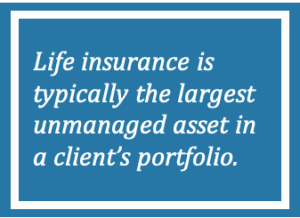A Biased View of Pacific Prime
A Biased View of Pacific Prime
Blog Article
How Pacific Prime can Save You Time, Stress, and Money.
Table of ContentsThe Main Principles Of Pacific Prime Getting My Pacific Prime To WorkThe Pacific Prime PDFsWhat Does Pacific Prime Do?Some Ideas on Pacific Prime You Should Know

This is since the information were gathered for a duration of strong economic efficiency. Of the approximated 42 million people that were without insurance, almost about 420,000 (regarding 1 percent) were under 65 years old, the age at which most Americans come to be eligible for Medicare; 32 million were grownups in between ages 18 and 65, about 19 percent of all grownups in this age; and 10 million were kids under 18 years old, about 13.9 percent of all kids (Mills, 2000).
These estimates of the variety of individuals without insurance are generated from the yearly March Supplement to the Current Population Survey (CPS), performed by the Demographics Bureau. Unless otherwise noted, nationwide price quotes of people without medical insurance and percentages of the populace with various type of insurance coverage are based on the CPS, the most widely utilized resource of price quotes of insurance policy protection and uninsurance prices.
Some Known Incorrect Statements About Pacific Prime
:max_bytes(150000):strip_icc()/how-does-insurance-sector-work.asp-FINAL-1ccff64db9f84b479921c47c008b08c6.png)
Still, the CPS is especially useful because it generates yearly quotes fairly rapidly, reporting the previous year's insurance coverage approximates each September, and because it is the basis for a consistent set of estimates for more than 20 years, enabling analysis of trends in protection with time. For these factors, in addition to the substantial use of the CPS in various other researches of insurance coverage that exist in this record, we count on CPS quotes, with limitations kept in mind.

The price quote of the variety of uninsured individuals increases when a population's insurance coverage status is tracked for a number of years. Over a three-year period starting early in 1993, 72 million people, 29 percent of the united state populace, were without protection for at least one month. Within a solitary year (1994 ), 53 million individuals experienced at least a month without coverage (Bennefield, 1998a)
6 out of every 10 uninsured grownups are themselves utilized. Functioning does enhance look at this site the likelihood that one and one's family participants will have insurance policy, it is not an assurance. Even participants of families with 2 full time wage income earners have nearly a one-in-ten chance of being without insurance (9.1 percent uninsured price) (Hoffman and Pohl, 2000).
The Main Principles Of Pacific Prime
New immigrants make up a considerable percentage of people without medical insurance. One evaluation has associated a substantial portion of the current development in the size of the U.S. without insurance population to immigrants that got here in the nation between 1994 and 1998 (Camarota and Edwards, 2000). Recent immigrants (those who came to the United States within the past 4 years) do have a high price of being uninsured (46 percent), but they and their youngsters account for just 6 percent of those without insurance policy nationally (Holahan et al., 2001).
The connection in between medical insurance and access to care is well established, as recorded later on in this phase. The connection between health insurance coverage and wellness end results is neither straight nor easy, a considerable clinical and wellness solutions research study literature links health insurance coverage to enhanced access to care, better top quality, and boosted individual and population health standing.
Degrees of analysis for taking a look at the impacts of uninsurance. This discussion of wellness insurance coverage focuses primarily on the united state population under age 65 since basically all Americans 65 and older have Medicare or various other public protection. Additionally, it concentrates particularly on those without any type of health and wellness insurance for any kind of length of time.
The Buzz on Pacific Prime
The problems faced by the underinsured are in some aspects similar to those encountered by the without insurance, although they are normally less extreme. Health and wellness insurance policy, nevertheless, is neither needed nor enough to get access to clinical services. The independent and straight impact of health insurance policy protection on access to health solutions is well established.
Others will certainly obtain the healthcare they need also without health and wellness insurance coverage, by spending for it expense or seeking it from providers that offer treatment complimentary or at extremely subsidized rates. For still others, medical insurance alone does not make certain receipt of treatment since of other nonfinancial obstacles, such as an absence of health and wellness treatment companies in their area, minimal access to transport, illiteracy, or linguistic and social differences.
The Of Pacific Prime
Official research study concerning without insurance populations in the United States dates to the late 1920s and early 1930s when the Board on the Cost of Medical Care created a collection of records regarding funding physician office sees and hospital stays. This issue became salient as the numbers of medically indigent climbed during the Great Anxiety.
Report this page